
Six beautiful, fragile and mysterious works for piano in combinations with other orchestral arrangements and solo, including pitch-based compositions and a graphic work directed by photographs, performed by members of Apartment House in duos, quintets & sextets; works initially commissioned by Another Timbre and Philip Thomas and here performed on piano by Siwan Rhys.
In Stock
Quantity in Basket: None
Log In to use our Wish List
Shipping Weight: 3.00 units
EU & UK Customers:
Discogs.com can handle your VAT payments
So please order through Discogs
Sample The Album:
Ryoko Akama-composer
Siwan Rhys-piano
Anton Lukoszevieze-cello
Gavin Morrison-alto flute
Angharad Davies-violin
Heather Roche-clarinet, bass clarinet
Simon Limbrick-vibraphone, marimba
Click an artist name above to see in-stock items for that artist.
Label: Another Timbre
Catalog ID: at180
Squidco Product Code: 31294
Format: CD
Condition: New
Released: 2021
Country: UK
Packaging: Cardboard Gatefold
Recorded at Goldsmith studio, in May, 201, by Simon Reynell.
Ian Power interviews Ryoko Akama
Ian: Why are these pieces together on this CD, and can you give us some insight into the title?
Ryoko: Simon Reynell approached me and asked, "Do you want to write piano works for Philip Thomas"? Simon wanted all of the works to be pitch-based. For me, that is like learning a new technology. You know, I kind of understand it, but not really enough to write or communicate with traditional notation. So the idea was, let's spend months and months together, Philip and myself. We live quite close by; can we do some sort of, like, learning zone for me to express or execute with the notation-based scores, but still something "alternative". And then it didn't happen for a bit, and then the pandemic started, and then suddenly Philip became ill.
And then, during these months and months of not being able to do anything, I got into this project: we have a shed in the garden, and before, every time I wanted to do a bit of DIY, I would ask someone else to help me or do something for me. But then I was like, you know what? Sod it. Don't apply my ideas to someone else. Just try to do something. So I made a project for myself to be a bit more useful for myself, which was about creating or refurbishing the shed, learning more carpentry skills to do it all by myself. So I spent a lot of time in the shed breaking and making and learning stuff, and sewing and all of these skills that I didn't think I could do. Again, I couldn't just be a carpenter. I was still kind of thinking creatively and aesthetically. So I got into this idea of a spatial sort of interaction, very individual. No one was about, I was absolutely locked down, but enjoying myself being part of the space. And it was all about me doing it. So I spent a lot of time in the shed. It's not completed yet. So that's in parallel, and that's where the title came from that I want to make music for being in a shed.
I: Tell me a little bit about your compositional process or writing process. Does it work similarly each time in the sense that you have kind of a map of how it's going to go? Or is it more free form?
R: Some of the scores are very free form. But I think during the lockdown I was very interested in documentary kind of things. So with ten days' etude: the first day, this section's created. The next day, I created another one. There wasn't much continuity; it was like, okay, I did this yesterday, I need to follow it up. I just did a bit every day for ten days, so it's called ten days' etude.
I: So that was an etude for you the composer.
R: Yeah. So overall, it eventually kind of made sense, because I was thinking a lot. But that was my like setup rule, the ten days I'm going to spend a bit of time to continue this composition. So anyway, I think all of the scores for this project came from the fact that I was at home with a piano, because I couldn't go anywhere. Eventually when I started to work with Siwan Rhys, it was still only on Zoom. So I never met her in person or never spent enough time with her to do something. I mean, for me it wasn't enough time. For many reasons, I feel quite, not insecure, but I just feel like this is still like a processing thing, because I was just absolutely on my own.
I: What is your relationship to the piano?
R: I always liked sound of pianos, of course depending on who plays. It's just really nice that it's there and then anyone can play. I think it's just a nice thing for kids as well, that you play and something happens. You know? Not like violins or other instruments, where you have to take it out and then you have to spend a bit of time too. But the piano is just there, you open it, and then play and just have a laugh or it sounds great or whatever. I told Siwan Rhys that, can you play as if you've just discovered the piano? And don't try to do too much, like not interesting but sophisticated things.
I: When I looked at the score for ichi go ichi e, it's a photograph of notecards and envelopes. Is that how it was delivered to the performers?
R: It's very physical. That's the only physical one that I did for this project. And this is probably like more "Ryoko" style. There are note cards labeled 1, 2, 3, 4, 5, so that the first equation was, are we supposed to play in order from 1 to 5, or can we have it like whatever you want? So we did a few different versions, because I didn't want to give an answer to that. So one of them is played from 1, 2, 3, 4, 5. So one played 1, 2, 3, 4, 5, and the other played 1, 2, 3, 4, 5, and then the idea was that you can swap 1 and 1 or 2 and 2. ichi go ichi e is a Japanese phrase meaning when it happens, it happens, and when it goes, it goes.
I: Is there any frustration that your unique scores are not somehow presented with a project like this, that people can't see them? Is there an ideal way for your work as a whole to be public facing, if you could design it from scratch?
R: I always wonder if or how a score might be performed or translated by other people without knowing who made it. Because I think my problem is quite often that people feel subconsciously, perhaps, that real scores are quiet, and it should be played pp or p. And I kind of have to say that this score doesn't really say that. You know, just play with confidence. Sometimes on the scores I would hint at that, like play more directly and confidently or something. And if someone takes it as loud as possible, that's up to them. But if people know my music, they think okay, it's really, really quiet. And occasionally I have to say, no no no no no, it's fine. Just play it. Play the piece. Because I also change myself, like what I'm into and stuff like that. Let's say ten days' etude sounds like it's by me. But how would it be played by a pianist if the composer wasn't visible? How does that change the entire attitude?
I: Put this project in context. What came before it? What has come or is coming after it for you? And how does it fit or bridge that timeline?
R: I still think this project is in process, in progress. For me, it's really interesting to work with pitch-based scores. I don't know if I can say traditional, because it's not traditional for me. I want to work a bit more with that in the future, with real people in a real space. It would be really nice if I could spend more time with people. And I think that's what comes next, that I want to see and work with people, because these scores all came from solitude. And a shed song is just an absolute solitude piece. Sometimes it just really doesn't make sense when you go page by page, but it's me being alone with the piano. So when I gave it to Siwan, I said I think it needs to have lots of corrections. Let me know where it doesn't work and when it does, because I've never made a piece like this, which is 18, 20 minutes long. Just, you know, musically correct me. And then she was like, it's fine. Just let's go for it. It sounds strange, but it's okay, let's leave it as it is. She just corrected me with things like, oh, I think you mean F, because you're putting C here, but you had put E-sharp, and she's like, what does that mean? Are you being experimental? No, it goes on the F. So apart from little technical things like that, she just said absolutely fine, don't worry about it. And it was a very strange piece to listen to, cause I kind of, I could feel that I did it by myself. It would be really great if I can just continue working on it. Because most often people say, can you write a text score, which is fine. I love text scores. But it's not often that someone says, can you write scores, but with pitches. And I'm like, okay, sir. You know? I'm going to try my best.
Artist Biographies
• Show Bio for Ryoko Akama "Ryoko Akama was born in 1976 in Japan, and currently lives in Huddersfield, West Yorkshire, United Kingdom. She is a member of The Lappetites, Rolex2$, Syth;s. She is a sound artist/composer/performer, who approaches listening situations that magnify silence, time and space and offer quiet temporal/spatial experiences. Her sound works are connected to literature, fine art and technology, and employ small and fragile objects such as paper balloons and glass bottles, creating tiny occurrences that embody 'almost nothing' aesthetics. She composes text events and performs a diversity of alternative scores in collaboration with international artists. Her works and projects have been funded by Arts Council England, Japan Society, Daiwa-Anglo Foundation, University of Huddersfield, Kirklees Council, Pro Helvetia and more. She is also active as a curator: collaborates with festivals, runs melange edition label and co-edits reductive journal/mumei publishing." ^ Hide Bio for Ryoko Akama • Show Bio for Siwan Rhys "Welsh pianist Siwan Rhys enjoys a varied career of solo, chamber, and ensemble playing, with a strong focus on contemporary music and collaboration with composers. She has played at prestigious British venues such as the Barbican Hall, Wigmore Hall, Royal Festival Hall, St David's Hall, Symphony Hall, and abroad at the Elbphilharmonie Hamburg, Le Tambour Rennes, and Shanghai Symphony Hall amongst others. She has also appeared at the Aldeburgh Festival, BBC Proms, Principal Sound, Occupy the Pianos, Lille Piano(s) Festival, and has recorded many times for television, radio, and labels such as NMC, all that dust, and Prima Facie. Her recent recording of Stockhausen's KONTAKTE (with percussionist George Barton) was released in October 2019 on the all that dust label. Recent concert engagements include performances of Charles Ives' 'Concord Sonata' in France as part of the Oeuvres Monstres series, Nono's ...sofferte onde serene... at the Principal Sound festival, Feldman's For Philip Guston and Why Patterns?, Stockhausen's KONTAKTE, and appearances at Occupy the Pianos and Lille Piano(s) Festival playing music by Vivier and Eastman. Also a regular ensemble and orchestral pianist, Siwan has worked with the London Sinfonietta, Birmingham Contemporary Music Group, Colin Currie Group, Aldeburgh Festival Ensemble, Mahogany Opera Group, Music Theatre Wales, Philharmonia Orchestra, London Symphony Orchestra, and City of Birmingham Symphony Orchestra, with conductors Oliver Knussen, François-Xavier Roth, and George Benjamin among others. Siwan works regularly with mezzo-soprano Lucy Goddard, and is a member of GBSR piano-percussion duo with whom she was a 2017-18 St John's Smith Square Young Artist. She is an honorary member of the Welsh Gorsedd of Bards and an Entente Cordiale alumna. She teaches at the London Contemporary School of Piano." ^ Hide Bio for Siwan Rhys • Show Bio for Anton Lukoszevieze "Cellist Anton Lukoszevieze (born 1965 in the UK) is one of the most diverse performers of his generation and is notable for his performances of avant-garde, experimental and improvised music. Anton has given many performances at numerous international festivals throughout Europe and the USA (Maerzmusik, Donaueschingen, Wien Modern, GAS, Transart, Ultima, etc.etc.). He has also made frequent programmes and broadcasts for BBC Radio 3, Danish Radio, SR2, Sweden, Deutschland Rundfunk, WDR, Germany and ORT, Austria. Deutschlandfunk, Berlin produced a radio portrait of him in September, 2003. Anton has also performed concerti with the City of Birmingham Symphony Orchestra at the 2001 Aldeburgh festival and the Netherlands Radio Symphony Orchestra. He has collaborated with many composers and performers including David Behrman, Alvin Lucier, Amnon Wolman, Pierre Strauch, Rytis Mazulis, Karlheinz Essl, Helmut Oehring, Christopher Fox, Philip Corner, Alvin Curran, Phill Niblock and Laurence Crane, He is unique in the UK through his use of the curved bow (BACH-Bogen), which he is using to develop new repertoire for the cello. From 2005-7 he was New Music Fellow at Kings College, Cambridge and Kettles Yard Gallery. Anton is the subject of four films (FoxFire Eins) by the renowned artist-filmmaker Jayne Parker. A new film Trilogy with compositions by Sylvano Bussotti, George Aperghis and Laurence Crane premieres at The London Film Festival, October 2008. In November will premiere a new hour long work by Christopher Fox for cello and the vocal ensemble Exaudi commissioned by the Huddersfield Contemporary Music Festival and will also present new solo works for cello and live electronics. Anton is also active as an artist, his work has been shown in Holland (Lux Nijmegen), CAC, Vilnius, Duisburg (EarPort), Austria, (Sammlung Essl), Wien Modern, The Slade School of Art, Kettles Yard Gallery, Cambridge Film Festival and Rational Rec. London. His work has been published in Musiktexte, Cologne, design Magazine and the book SoundVisions (Pfau-Verlag, Saarbrucken, 2005). Anton Lukoszevieze is founder and director of the ensemble Apartment House, a member of the radical noise group Zeitkratzer and recently made his contemporary dance debut with the Vincent Dance Company in Broken Chords, Dusseldorf." ^ Hide Bio for Anton Lukoszevieze • Show Bio for Gavin Morrison Gavin Morrison: "Flautist, West Ham fan, terrible golfer, lover of single malt and real ale." ^ Hide Bio for Gavin Morrison • Show Bio for Angharad Davies "Angharad Davies is a violinist, one at ease in both improvising and composition, with a wide discography as part of varied range of ensembles and groups. She's a specialist in the art of 'preparing' her violin, adding objects or materials to it to extend its sound making properties. Her sensitivity to the sonic possibilities of musical situations and attentiveness to their shape and direction make her one of contemporary music's most fascinating figures. 2015 has seen her being commissioned for a new work at the Counterflows Festival, Glasgow and premiering Eliane Radigue's new solo for violin, Occam XXI at the El Nicho Festival, Mexico. She's performed at, the Queen Elizabeth Hall, BBC Proms, Music We'd Like to Hear's concert series, is an associate artist at Cafe Oto, is a member of Apartment House, Cranc and Common Objects, been artist in residence at Q-02, and played live with Tony Conrad in the Turbine Room at the Tate Modern. Other collaborations have featured the likes of John Butcher, Daniela Cascella, Rhodri Davies, Julia Eckhardt , Kazuko Hohki, Roberta Jean, Lina Lapelyte, Dominic Lash, Tisha Mukarji, Andrea Neumann, Rie Nakajima, Tim Parkinson, J.G.Thirlwell, Stefan Thut, Paul Whitty, Manfred Werder, Birgit Ulher, Taku Unami and she's released records on Absinth Records, Another Timbre, Potlatch and Confrontrecords." ^ Hide Bio for Angharad Davies • Show Bio for Heather Roche "Born in Canada, clarinetist Heather Roche trained in England, lived in Germany for 7 years and now lives in London. She has performed at some of the major European festivals, including musikFest (Berlin), BachFest (Leipzig), Musica Nova (Helsinki), Acht Brücken (Cologne), the International Computer Music Conference (Huddersfield, Ljubljana), the Dias de Música Electroacústica (Seia, Portugal) and the Agora Festival (Ircam, Paris). She has also performed solo programmes at the Zagreb Music Biennale, the Huddersfield Contemporary Music Festival, the New York Electroacoustic Symposium, at CIRMMT (Montreal), Unerhörte Musik (Berlin), Eavesdropping (London), and with the Birmingham Electroacoustic Sound Theatre (BEAST). She has performed with ensembles and orchestras including Musik Fabrik (Cologne), the WDR Orchestra (Cologne), mimitabu (Gothenburg), the London Symphony Orchestra (London), ensemble Garage (Cologne), ensemble interface (Berlin), the Riot Ensemble (London), the Alisios Camerata (Zagreb), and ensemble proton (Bern). She also plays across the UK in a trio with Carla Rees (flutes) and Xenia Pestova (piano) and in 2015 formed an duo with the accordionist Eva Zöllner, with whom she has played across Germany, the UK and in Portugal. She is a founding member of hand werk, a 6-person chamber music ensemble based in Cologne, and worked with the group from 2010-2017. She has solo CDs out on the HCR/NMC and Métier labels. Please see the Discography for further details. In 2014 she was awarded a DIVA (Danish International Visiting Artists Fellowship), and lived in Copenhagen for two months. Since 2016 she has acted as the Reviews Editor for TEMPO, a quarterly journal for contemporary music published by Cambridge University Press. Her website is host to one of the most widely read new music blogs on the Internet. In 2017 it had 75,000 hits from around the world. She successfully crowdfunded in 2014 in order to host her first composition competition. Six young composers were chosen out of 270 applicants to write new pieces, which were premiered in 2016. She is a fervent advocate of collaboration, and her PhD research at the University of Huddersfield (under the supervision of Dr. Philip Thomas) explored the nature of dialogue within performer-composer relationships. She has given workshops in instrumental technique and/or iPad use in performance all over Europe, for example in London, Munich and Copenhagen. Heather completed her Masters of Music (Orchestral Training) in 2006 at the Guildhall School of Music and Drama in London, studying under Joy Farrall and Laurent Ben Slimane, in addition to conducting with Sian Edwards. Following her degree she completed residencies with the International Ensemble Modern Academy, at IMPULS in Graz and with ensemble recherche in Freiburg, the Darmstadt Summer Courses 2008 and 2010 and the International Ensemble Modern Academy in Innsbruck, Austria. She has performed in masterclasses with Michael Collins, Ernesto Molinari and Shizuyo Oka, to name a few. She completed her BMus in 2005 at the University of Victoria, Canada, studying under Patricia Kostek." ^ Hide Bio for Heather Roche • Show Bio for Simon Limbrick "Simon Limbrick's involvement in music embraces performance, composing and education.
He was a member of the cult systems orchestra The Lost Jockey and Man Jumping, recording for EG Editions and creating scores for leading dance companies, Second Stride, London Contemporary Dance, Rosemary Lee and Sue MacLennan. He has been in demand as a percussionist performing all over the world with the Nash Ensemble, Birmingham Contemporary Music Group, Endymion Ensemble, Composers' Ensemble and Fibonacci Sequence as well as recording with artists such as Alabama3, Gavin Bryars Pete Lockett and for Blue Note Records. He has been guest principal with the LSO and worked under conductors, Leonard Bernstein, Oliver Knussen, Simon Rattle and Tom Ades. He has featured on film and television including documentaries about Steve Reich and Kenneth MacMillan's award winning Judas Tree.Compositions created for him include works by Javier Alvarez, Brian Elias (Kenneth MacMillan's last ballet The Judas Tree), Vic Hoyland and Andrew Poppy. He has performed the world-premieres of solo pieces by James Dillon, Frederic Rzewski , Claude Vivier, Philip Cashian, Thea Musgrave, Harry de Wit, Howard Skempton, Michael Wolters and Ed Kelly. His solo performances have been broadcast by the BBC, RAI, Radio France, Dutch TV and radio. Recently, he performed his own concerto Bulls Yard and Stockhausen's Zyklus at the Sage, Gateshead,(see review) solo steel-pan in Brian Elias' Judas Tree at Royal Opera House, London, in 2010 and directed his mixed-media project, dot-machine, a web-based musical construction accessible on www.marimbo.com. He created a 24 hour long piece surfaces with the composer James Saunders, with financial assistance from the Arts Council of Great Britain and premiered at the Huddersfield Contemporary Music Festival in 2011. In education, Simon has led workshops since 1982, and been a returning resident artist in festivals and organisations, including Blackheath Concert Halls, Aldeburgh Music, Sound It Out , Spitalfields Festival. Workshop projects have been led by him throughout Europe. As a fully-qualified teacher, he has led Music and Performing Arts in Secondary Schools for five years. He has led school and community projects for Aldeburgh Music. As Artistic Director, he helped establish In Harmony Norwich, creating mixed-ability orchestral pieces for professional and young student players. Until the School of Music closed in June 2014, he was Director of 'Musician in the Community' and 'Creative Leadership' courses at University of East Anglia.
As a composer, Simon has gained an MA in Electroacoustic Composition from City University and collaborated as a composer on a number of large scale works, including a project at Fort Dunlop, Birmingham, with Rosemary Lee and site-specific work with Dutch composer/sound sculptor Harry de Wit in Holland and Brussels.He has produced film scores for TV and film festivals and composed music for theatre productions at the National Theatre and Royal Shakespeare Companies. Groups he has created pieces for include Mary Wiegold's Songbook, Roger Heaton Group, Ensemble Bash, Network of Sparks, Endymion Ensemble, Richard Durrant, Ritmatic, Hooloo. The Brighton Youth Orchestra performed machina lumina , for string ensemble and vibraphone throughout 2009. His composition Machine for Living for Landesmusikrat/Splash was recorded at Deutschlandradio. He has produced recordings for wergo and others.Currently composing a large piece for jazz brass and marimba. He has created the CDs, Steam, Hooloo, Clean, Ritmatik, Dot-Machine, Hammer, Rise and Fall, , between and Relay, which are frequently broadcast and available on well-known download sites. NEW RELEASE of a double CD RELAY, of contemporary steel-pan music in Sept 2014. Sound Composer for the film 3 Church Walk by the director Emily Richardson premiered on 18th Oct 2014 at The London Festival, BFI, London." ^ Hide Bio for Simon Limbrick
7/9/2025
Have a better biography or biography source? Please Contact Us so that we can update this biography.
7/9/2025
Have a better biography or biography source? Please Contact Us so that we can update this biography.
7/9/2025
Have a better biography or biography source? Please Contact Us so that we can update this biography.
7/9/2025
Have a better biography or biography source? Please Contact Us so that we can update this biography.
7/9/2025
Have a better biography or biography source? Please Contact Us so that we can update this biography.
7/9/2025
Have a better biography or biography source? Please Contact Us so that we can update this biography.
7/9/2025
Have a better biography or biography source? Please Contact Us so that we can update this biography.
Track Listing:
1. Ichi Go Ichi E 9:14
2. Melody 10:32
3. 10 Days' Etude 6:38
4. This And That 6:38
5. Proposal Eleven 18:21
6. A Shed Song 18:08
Compositional Forms
Piano & Keyboards
Graphic Scores
Solo Artist Recordings
Duo Recordings
Quintet Recordings
Sextet Recordings
Ambient, Minimal, Reductionist, Onky Sound, &c.
New in Compositional Music
Staff Picks & Recommended Items
Last Copy of Items that will not be restocked...
Search for other titles on the label:
Another Timbre.





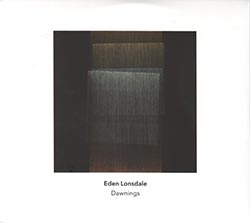


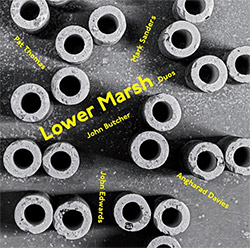
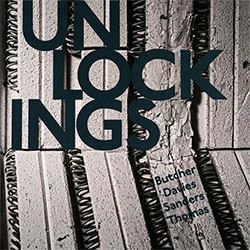


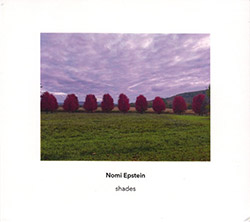


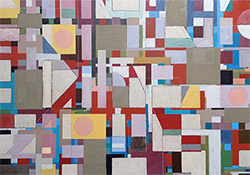
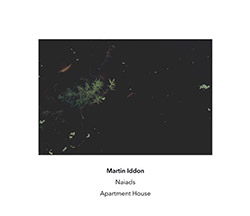
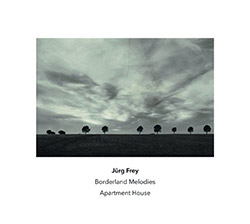

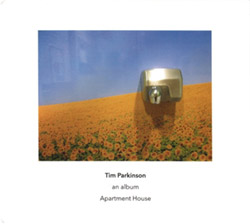

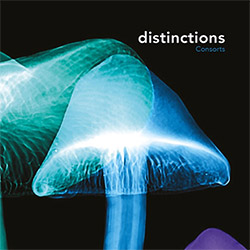






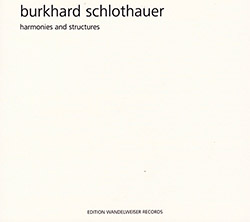



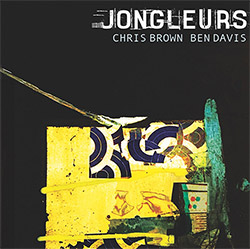
![BlueRing Improvisers: Materia [2 CDs]](https://www.teuthida.com/productImages/misc4/36513.jpg)




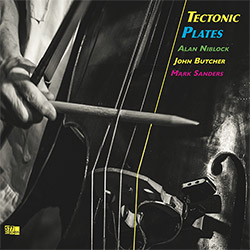


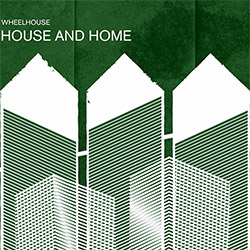
![Wheelhouse (Rempis / Adasiewicz / McBride): House And Home [VINYL]](https://www.teuthida.com/productImages/misc4/36462.jpg)
![+DOG+: The Light Of Our Lives [2 CDs]](https://www.teuthida.com/productImages/misc4/36009.jpg)


![Parker, Evan / Jean-Marc Foussat: Insolence [VINYL]](https://www.teuthida.com/productImages/misc4/36398.jpg)










![Deupree, Jerome / Sylvie Courvoisier / Lester St. Louis / Joe Morris: Canyon [2 CDs]](https://www.teuthida.com/productImages/misc4/36404.jpg)



![Eventless Plot | Haarvol: The Subliminal Paths [CASSETTE + DOWNLOAD]](https://www.teuthida.com/productImages/misc4/36232.jpg)










![Eventless Plot | Francesco Covarino: Methexis [CASSETTE + DOWNLOAD]](https://www.teuthida.com/productImages/misc4/36231.jpg)



![Das B (Mazen Kerbaj / Mike Majkowski / Magda Mayas / Tony Buck): Love [VINYL]](https://www.teuthida.com/productImages/misc4/36329.jpg)


![Eternities: Rides Again [CASSETTE]](https://www.teuthida.com/productImages/misc4/36247.jpg)
![Lopez, Francisco: Untitled (2021-2022) [2 CDs]](https://www.teuthida.com/productImages/misc4/36438.jpg)






![Money : Money 2 [2 CDs]](https://www.teuthida.com/productImages/misc4/35894.jpg)




![Klinga, Erik: Elusive Shimmer [VINYL]](https://www.teuthida.com/productImages/misc4/36258.jpg)
![CHANGES TO blind (Phil Zampino): Volume 9 - I Wave on a Fine Vile Mist [CD + DOWNLOAD]](https://www.teuthida.com/productImages/misc4/36061.jpg)

![Wallmart / Rubbish: Asset Protection [split CD]](https://www.teuthida.com/productImages/misc4/35900.jpg)


![+Dog+: The Family Music Book Vol. 5 [2 CDs]](https://www.teuthida.com/productImages/misc4/35897.jpg)
![Kuvveti, Deli : Kuslar Soyledi [CASSETTE w/ DOWNLOAD]](https://www.teuthida.com/productImages/misc4/36107.jpg)

![Brown, Dan / Dan Reynolds: Live At The Grange Hall [unauthorized][CASSETTE]](https://www.teuthida.com/productImages/misc4/36245.jpg)






![Palestine, Charlemagne / Seppe Gebruers: Beyondddddd The Notessssss [VINYL]](https://www.teuthida.com/productImages/misc4/36206.jpg)
![Palestine, Charlemagne / Seppe Gebruers: Beyondddddd The Notessssss [NEON GREEN VINYL]](https://www.teuthida.com/productImages/misc4/36207.jpg)

![Laubrock, Ingrid: Purposing The Air [2 CDs]](https://www.teuthida.com/productImages/misc4/35639.jpg)

![Yoko, Ono / The Great Learning Orchestra: Selected Recordings From Grapefruit [2 CDs]](https://www.teuthida.com/productImages/misc4/35841.jpg)









![Zorn, John / JACK Quartet: The Complete String Quartets [2 CDs]](https://www.teuthida.com/productImages/misc4/35609.jpg)


![Sorry For Laughing (G. Whitlow / M. Bates / Dave-Id / E. Ka-Spel): Rain Flowers [2 CDS]](https://www.teuthida.com/productImages/misc4/35985.jpg)

![Rolando, Tommaso / Andy Moor : Biscotti [CASSETTE w/ DOWNLOADS]](https://www.teuthida.com/productImages/misc4/36106.jpg)


![Electric Bird Noise / Derek Roddy: 8-10-22 [CD EP]](https://www.teuthida.com/productImages/misc4/35970.jpg)








![Elephant9 : Mythical River [VINYL]](https://www.teuthida.com/productImages/misc4/34624.jpg)



![Elephant9 with Terje Rypdal: Catching Fire [VINYL 2 LPs]](https://www.teuthida.com/productImages/misc4/35355.jpg)
![Deerlady (Obomsawin, Mali / Magdalena Abrego): Greatest Hits [VINYL]](https://www.teuthida.com/productImages/misc4/34876.jpg)







![Surplus 1980: Illusion of Consistency [CD]](https://www.teuthida.com/productImages/misc4/35069.jpg)
![Staiano, Moe: Away Towards the Light [VINYL + DOWNLOAD]](https://www.teuthida.com/productImages/misc4/35037.jpg)
![Coley, Byron: Dating Tips for Touring Bands [VINYL]](https://www.teuthida.com/productImages/misc4/17906.jpg)

![Lost Kisses: My Life is Sad & Funny [DVD]](https://www.teuthida.com/productImages/misc4/lostKissesDVD.jpg)